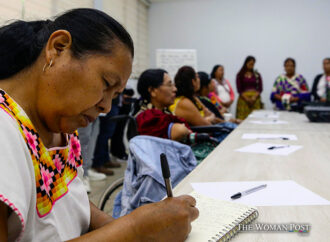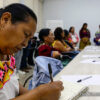In general, women spend more time on unpaid domestic work, and in rural areas, the percentage is growing considerably. But why? Is there greater discrimination against rural women?.
A recent report by the Technical Secretariat of the Council of Ministers for Women of Central America and the Dominican Republic revealed that the inequality gap affecting women has caused severe problems in their economic growth and especially in their autonomy.
The figures collected show that Latin America and the Caribbean are unequal regions globally. In addition, it indicates that illiteracy is the result of several factors, such as poverty, malnutrition, health problems, child labor, migration, and lack of access to continuous and digital teaching and learning. The discrimination and vulnerabilities experienced by rural women are mainly in agriculture, tourism, and fisheries.
The domestic labor force focuses on rural women, i.e., 3 out of 10 women are responsible for domestic work, while 6 out of 10 rural men are engaged in other activities. These numbers reflect the severe vulnerability of rural women and are characterized by the historical power structure and some customs.
These actions cause stress, anxiety, and uncertainty linked to mental and emotional exhaustion in women. In this sense, economic and psychological violence impacted the lives of rural women. However, some entities develop action plans, awareness campaigns, programs, and initiatives that allow them to identify the problem and attack it from the root so that the most vulnerable women and girls achieve success.
7 Inequalities Faced by Rural Women
The Federation of Rural Women’s Associations (FADEMUR) reveals that women suffer double discrimination, the first for being women and the other for being rural. However, they also cite other exclusions that are part of the identity process.
1. Invisible labor market: A research article published by Carlos René Rodríguez García in Megazine Javeriana reveals that labor inactivity in the rural female population is homogeneous, habitual, and transient. In addition, it is a cultural and decisive process that influences active women who have a collaborative role.
2. Increased domestic workload: The burden of household work on rural women is greater than on urban women. However, some studies consider that it is not only aid but an obligation.
3. Greater poverty, more labor, and fewer rights on their land: Historically, hunger and poverty generate gender inequality. However, 60% of chronically hungry people are women and girls, according to Gender Policies and Strategies (LDCs). The worst thing is that it emphasizes the financial crisis we are experiencing.
4. Zero access to agricultural investments: A recent article published in UN Women estimates that women have between 20% and 30% better performance on their farms than men and generate between 100 and 150 million, to eliminate poverty and close the existing gap.
Also read: OBSTACLES WOMEN FACE IN THE GENDER PAY GAP
5. Less access to credit: Credit is not a point that favors women who work the land since access to financing is only 5% maximum or 10%.
6. Vertical and horizontal segregation: In vertical segregation, women in high positions in the villages are unfair due to wages and represent about 25%. Like horizontal segregation, rural women engage in jobs that restrict their job success and accept informal jobs. That is why there is significant discrimination against rural women.
7. The gap in access to infrastructure and ICT: The digital gap between women and men is quite pronounced. However, this gap is strengthened more harshly in rural sectors than in urban areas.
In short, all these gaps disadvantage rural women and girls, but they face this situation with great courage and gallantry. An article called “Rural Women: Intersecting Inequalities” published by Blanca Munster Infante reveals that the study allowed us to assess the inequalities in the well-being of rural women and girls with emphasis on their health conditions, housing, perceptions, and above all, empowerment.
























Leave a Comment
Your email address will not be published. Required fields are marked with *